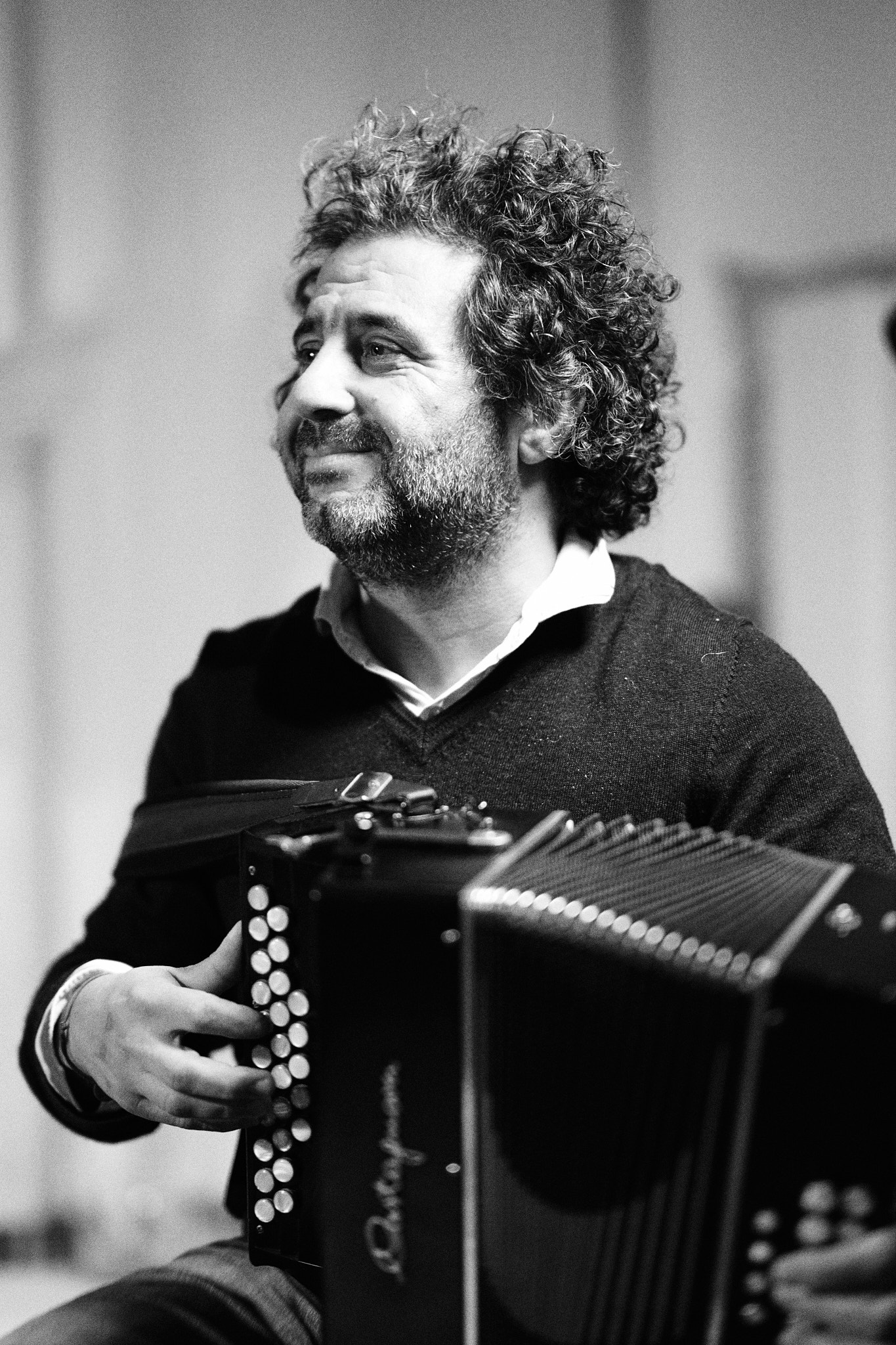
SÉBASTIEN BERTRAND
Les Gens d'Ailleurs
Philippe Cousin
Nothing predisposed young Sébastien Bertrand to one day become an accordionist, living in Lannion, Brittany. Born in Lebanon, he was adopted at the age of nine months by a family from the Breton marshes of the Vendée region, straddling the border between Vendée and Loire-Atlantique.
But he was welcomed into a family of musicians and collectors. He could have played the oud if he'd stayed in Lebanon. In Vendée, he turned to the diatonic accordion. While still very young, he took to the stage with his accordion as part of a folk group. His father's music-collecting campaigns soon led him to break away from traditional music, and his path crossed that of musicians from different musical horizons. He took up the diatonic in secondary school, then in high school.

Then came the Duo Bertrand alongside his uncle Thierry. An original duo combining the diatonic accordion and the veuze from the Nantes area. Together, they published two albums. Before expanding into Duo Bertrand en Cie, which brings together musicians from diverse musical backgrounds. With this company, he begins collective creations in which he explores again and again. He moves from traditional music, which he has played since childhood, to jazz, from oriental music to electro, from hip hop to rock, theater, dance and cinema. For him, everything is a pretext for discovery and experimentation. He embarked on one international tour after another.
At the age of 35, a trip to his native land proved to be a revelation for him. He composed an autobiographical show, "Chemin de la Belle Étoile". His travels between the Atlantic and the Mediterranean resulted in the album "Traversées".
He then took a break for seven years, settling in Brittany and devoting himself to his family life. This was also the time when he set up a diatonic accordion school. Teaching became his daily routine.
And then, a few months ago, he decided to revive the tunes he'd been composing and recording on his mobile phone all these years.
He invited three musician friends and off he went. Joining him are Delphine Grosseries, cellist and painter, Julien Padovani, who displays his talents on piano, Hammond organ and chromatic accordion. And Christine Craipeau, a mezzo-soprano singer who likes to accompany artists and musical troupes.
The result of these encounters is the album "Les Gens d'Ailleurs", on which Sébastien delivers an astonishing musical journey, a music that illustrates the stages of his life in an original way.
The nine tracks on this elegant album tell the story of a man with a singular destiny, straddling two cultures.
Clair de Lune" takes us to Eastern Europe, before landing in Brittany, in the little port of Locquirec, in "Un café chez Tilly". In "La Lune s'endort", which wanders between the melancholy notes of an accordion and a piano, we find young Sébastien, an adopted child who, as an adult, has no memory of dreaming. "La Colline des Cèdres" recounts the upheavals of the world and memories of war. A stopover in "La Rue des Mésanges" is the sound lab where the quartet came together to create this superb album. A small tribute to the great accordionist Marc Perrone, who left a lasting impression on the young boy he was, with a cover of the famous waltz "Vas-y Mimile". The album ends with "Ne plus rêver d'avoir un jour"... 20 years, to a melody composed by Julien. An eternal question that all young people ask themselves one day.
It's on this track that this original album closes, with its sometimes ethereal atmosphere, spidery from place to place, almost enigmatic at times, a sort of soundtrack to a life marked out by light and shadow. An album full of nuances, both sensitive and endearing.
Labo Sonore – www.sebastien-bertrand.com
